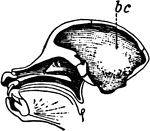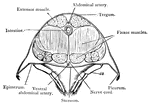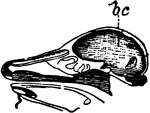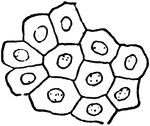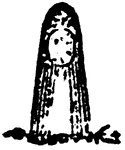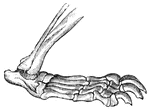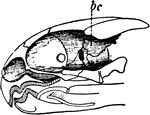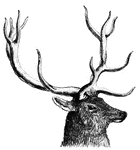Clipart tagged: ‘zoology’
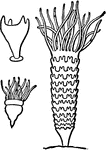
Aurelia
"Development of Aurelia. Above to the left, young scyphistoma with four perradial tentacles. Below to…
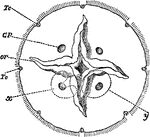
Aurelia Aurita
"Surface view of the sub-umbrella or oral aspect of Aurelia aurita, to show the position of the openings…

Aurelia Aurita
"Half of the lower surface of Aurelia aurita. The transparent tissues allow the enteric cavities and…

Aurelia Aurita
"Tentaculocyst and marginal lappets of Aurelia aurita. In the lefthand figure-ML, marginal lappets;…
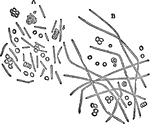
Bacillis Anthracis
"A. Bacilli mingled with blood corpuscules from the blood of a guinea-pig; some of the bacilli dividing.…

Connective Tissue
"Presently in the production of ordinay connective tissue, fibers of two kinds make their appearance…

Connective Tissue
"Presently in the production of ordinay connective tissue, fibers of two kinds make their appearance…

Connective Tissue
"Connective tissue of sponge." — Encyclopedia BSponge Diver Counting Cardsritannica, 1893
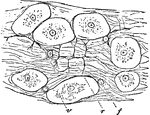
Connective Tissue
"Connective tissue of slug. r, ramified cell; f, flattened cell; v, vesicular cell. The fibers in the…
Crayfish
Longitudinal-section of a crayfish, showing digestive, circulatory, reproductive, excretory, and nervous…

Euglena Viridis
"A, Euglena viridis, a flagellate Infusorian. I, typical swimming condition; 2, somewhat contracted;…
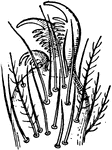
Foot of a garden spider
"Closeup of a garden spider's foot, showing the 'combs' for clinging to webs."—Finley, 1917

Hamster
Hamsters are rodents. They are adapted for rapid and continuous gnawing, and they live chiefly upon…

Colony of Heliopora coerulea
"Portion of the surface of a colony of Heliopora coerulea magnified, showing two calices and the surrounding…
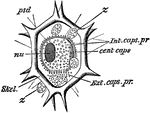
L. Annularis
"Liteocircus annularis. cent. caps, central capsule; ext. caps. pr, extra-capsular protoplasm; int.…
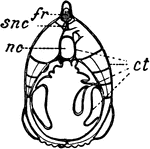
Section of a lancelet
"Section of Ampioxus, fr, fin ray; ct, connective tissue; nc, notochord, ; snc, supraneural…

Side view of lancelet
"Side view of Amphioxus: fs, fin supports; nc, notochord; ot, oral tentacles."—Finley,…

Noctiluca Miliaris
"Flagellum of Noctiluca miliaris (highly magnified). s, transversely striated substance; b, base of…
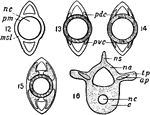
Development of the notochord
"Development of notochord : msl, mesoblastic skeletogenous layer ; pdc, paired dorsal cartilage; pvc,…

Colony of Pennatula phosphorea
"Colony of Pennatula phosphorea from the metarachidial aspect. p, The peduncle. B, Section…

Bat Skeleton
In the bat, the forelimbs are much longer than the hindlimbs and have several of the fingers greatly…
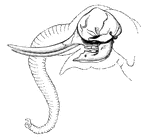
Elephant Skull
The skull of the Indian Elephant. (i) tusk-like upper incisors; (m) lower jaw, with grinding molars,…
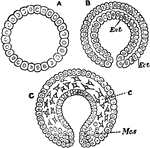
Unilaminar
"Sections through the unilaminar (A), bilaminar (B), and trilaminar (C) conditions of the typical biastoder.…

Types of Zoogloea
"A. Mixed Zoogloea found as a pellicle on the surface of vegetable infusions &c; it consists of various…
